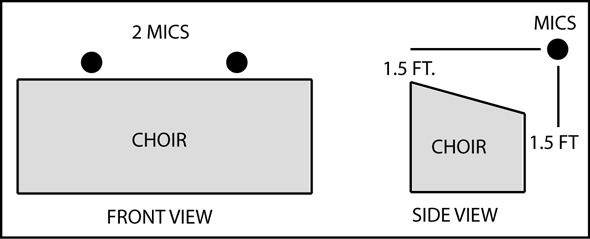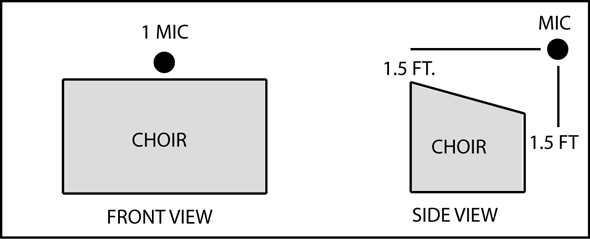Perhaps the most challenging sound-reinforcement job—in terms of feedback—is amplifying children. It’s often hard to hear children in dramatic or musical productions.
That’s because most children don’t project. Since they produce a low volume on stage, you must turn up their mics a lot to hear them—resulting in feedback.
Here I’ll offer some creative solutions to help those young voices be heard. I won’t cover wireless mics—even though they work well—because they are expensive and complicated to use.
Use A High-Pass Filter
Children’s voices seldom contain frequencies below 200 Hz, so you can filter out everything below that frequency. On each mic channel, switch in a high-pass (low-cut) filter set to 200 Hz, Q = 1.7 to 2.0.
Have a deep-voiced boy talk on stage while you listen to the PA system in use. Gradually turn up the high-pass frequency until the reproduced voice thins out, then back off a little. You’ve just prevented feedback for all the frequencies below about 200 Hz.
Try Temporary Close Mic’ing
Close mic’ing results in more gain before feedback than distant miking. When a microphone is close to its sound source, the mic picks up a louder sound than at a distance. So you don’t need to turn up the gain so much to achieve adequate volume in the theater.
Let’s say that a choir is singing near the back wall. Try placing a floor mic about 10 feet from the kids when they walk in, then remove the mic when they walk out. The lights could be dimmed during the changeover. That would provide more volume than mics near the stage edge.
Use A Hanging Mic
If the microphone locations must be permanent, probably a hanging mic is the best solution. Mount the microphone as shown below.
When the choir sings, turn up just the one hanging mic, then turn it off otherwise. Try to group the children in a few rows so that the choir is narrow.
That way the one hanging mic will pick up the far left-and-right edges of the choir.

Loudspeaker Aspects
Place loudspeakers close to the audience. That makes the loudspeakers’ sound stronger in the audience area. The loudspeakers are louder simply because they are closer to the audience members. So you get more volume with no increase in feedback.
Many schools and theaters have loudspeakers permanently installed over the proscenium arch. That loudspeaker location tends to feed back easily because the loudspeakers are close to the mics and far from the audience. You might rent or purchase some smaller 2-way loudspeakers (with an 8-inch or 12-inch woofer), and mount them on the wall or on stands close to the audience area.
In the figure below, an extra pair of loudspeakers is mounted near the back of the audience. That way, the front loudspeakers don’t need to be turned up so much to achieve adequate loudness in the back. You might be able to get by with a single pair of loudspeakers if your auditorium is not very deep.
You also might want to delay the audio signal going to the loudspeakers; that creates the illusion that the sound is coming from onstage rather than from the nearest loudspeaker. One low-cost delay unit is shown below.
Try Anti-Feedback Devices
Either a 1/3-octave graphic equalizer or an automatic feedback suppressor can help achieve a little more gain before feedback out of your system.
When all else fails, solve the problem at its source: train the children to project.
Bruce Bartlett is a microphone engineer (www.bartlettmics.com), recording engineer, live sound engineer, and audio journalist.






















